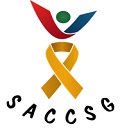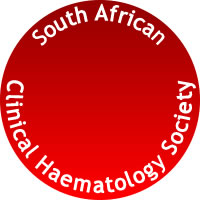Original Research
[123I]-metaiodobenzylguanidine imaging findings and outcome in patients with metastatic neuroblastoma
Submitted: 20 September 2022 | Published: 06 March 2023
About the author(s)
Yaw A. Amoako, Department of Radiation Medicine, Faculty of Health Sciences, University of Cape Town, Cape Town, South Africa; and, School of Medicine and Dentistry, College of Health Sciences, Kwame Nkrumah University of Science and Technology, Kumasi, GhanaAnn van Eyssen, Department of Paediatrics, Faculty of Health Sciences, University of Cape Town, Cape Town, South Africa
Anita Brink, Department of Radiation Medicine, Faculty of Health Sciences, University of Cape Town, Cape Town, South Africa
Abstract
Background: 123I-Metaiodobenzylguanidine ([123I]mIBG) is the agent of choice to assess for presence of metastases and therapy response in patients with neuroblastoma.
Aim: To assess [123I]mIBG scan results and outcome in patients with stage 4 neuroblastoma at our institution.
Setting: Red Cross War Memorial Children’s Hospital.
Methods: A retrospective review of baseline and follow-up [123I]mIBG scans of patients who presented between January 2001 and May 2015. The clinical follow up extended until October 2019. The association between the baseline and post-induction Curie score (CS) and overall survival (OS) were assessed.
Results: Thirty-four patients with stage 4 disease were included. Twenty-two (65%) patients died. The median age at diagnosis for survivors was 15.5 months vs 39 months for those who died (Kruskal Wallis c2 = 4.63, p = 0.03). Neither the baseline CS nor the post-induction CS predict the outcome or duration of survival. The median OS for a baseline CS ≤ 12 and CS > 12 was 19 and 26 months, p = 0.13. The median OS for a post-induction CS > 2 and CS ≤ 2 was 28 and 26 months, p = 0.66.
Conclusion: In this study, baseline, post-induction and reduction in CS did not predict OS in stage 4 neuroblastoma. Factors such as small patient numbers, less intensive treatment regimes, and possible poorly dedifferentiated disease have been identified for this finding.
Contribution: In contrast to international studies the Curie score did not predict treatment outcome in the South African setting where the vast majority of patients are treated with OPEC/OJEC OPEC/OJEC (vincristine [O], cisplatin [P], etoposide [E], cyclophosphamide [C] and carboplatin [J]) chemotherapy.
Keywords
Metrics
Total abstract views: 1244Total article views: 1384



